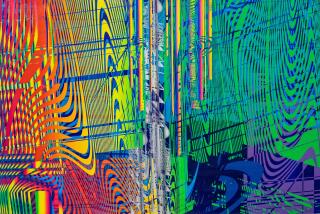ART REVIEW : CHINESE PRINTS WITH CULTURAL TALES
- Share via
“Jili Jieling (Seasons of Good Fortune),” at the Craft and Folk Art Museum to April 28, is more than an exhibition of traditional Chinese woodblock prints. It is a slice of 19th- and 20th-Century folk culture, revealed in ephemeral prints used as talismans to communicate with deities.
The works, selected from about 2,000 collected by David H. S. Chau, were meant to be posted in strategic locations--doorways, kitchens, fences--so that the gods in charge of those locales would bestow their blessings on the inhabitants. A print of the Horse King might be pasted to a railing or stable door to ward off equine diseases. The image of the Demon Queller, equipped with a brush and scroll to tally good and bad deeds, served as a master of fate and fortune when posted on a back entrance.
Some of the prints in the show were made to be displayed during New Year celebrations and replaced annually. Others were to be burned in rituals, wafting the gods represented on them up to heaven. Neither type of print was expected to last, so collections such as Chau’s are a rarity, as well as a visual pleasure.
Among the variety of folk art shown are prints made completely from woodblocks (one for each hue); others are enhanced by delicate hand-painting. Compositions range from a circular “Puff of Harmony,” depicting a mythical figure as a spherical being, to a horizontally banded congregation of every deity who matters. All the prints are characterized by a lively linear quality, bright color and crisp pattern.
The exhibition begins on the first floor and continues on the third, where tools and actual woodblocks are also shown. Continuous video screenings offer an interview with curator William D. Y. Wu and a demonstration of printing by the collector.
More to Read
The biggest entertainment stories
Get our big stories about Hollywood, film, television, music, arts, culture and more right in your inbox as soon as they publish.
You may occasionally receive promotional content from the Los Angeles Times.










